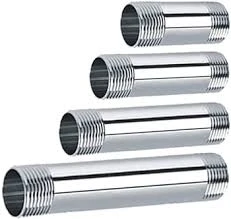-
Cangzhou Yulong Steel Co., Ltd.
-
Phone:
+86 13303177267 -
Email:
admin@ylsteelfittings.com
- English
- Arabic
- Italian
- Spanish
- Portuguese
- German
- kazakh
- Persian
- Greek
- French
- Russian
- Polish
- Thai
- Indonesian
- Vietnamese
- Zulu
- Korean
- Uzbek
- Hindi
- Serbian
- Malay
- Ukrainian
- Gujarati
- Haitian Creole
- hausa
- hawaiian
- Hebrew
- Miao
- Hungarian
- Icelandic
- igbo
- irish
- Japanese
- Javanese
- Kannada
- Khmer
- Rwandese
- Afrikaans
- Albanian
- Amharic
- Armenian
- Azerbaijani
- Basque
- Belarusian
- Bengali
- Bosnian
- Bulgarian
- Catalan
- Cebuano
- China
- China (Taiwan)
- Corsican
- Croatian
- Czech
- Danish
- Esperanto
- Estonian
- Finnish
- Frisian
- Galician
- Georgian
- Kurdish
- Kyrgyz
- Lao
- Latin
- Latvian
- Lithuanian
- Luxembourgish
- Macedonian
- Malgashi
- Malayalam
- Maltese
- Maori
- Marathi
- Mongolian
- Myanmar
- Nepali
- Norwegian
- Norwegian
- Occitan
- Pashto
- Dutch
- Punjabi
- Romanian
- Samoan
- Scottish Gaelic
- Sesotho
- Shona
- Sindhi
- Sinhala
- Slovak
- Slovenian
- Somali
- Sundanese
- Swahili
- Swedish
- Tagalog
- Tajik
- Tamil
- Tatar
- Telugu
- Turkish
- Turkmen
- Urdu
- Uighur
- Welsh
- Bantu
- Yiddish
- Yoruba

Sep . 28, 2024 17:32 Back to list
Exploring the Essentials of API 5L Specifications for Pipeline Standards and Applications
Understanding API 5L Specification A Comprehensive Overview
The API 5L specification is a pivotal standard in the pipeline industry, established by the American Petroleum Institute (API). It provides essential criteria for the manufacturing and testing of line pipes used in the transportation of oil and gas. In an era where efficiency and safety are paramount, API 5L plays a crucial role in ensuring that pipelines meet the rigorous demands of modern energy transmission.
Historical Context and Purpose
The API 5L specification was first introduced in 1927 and has evolved over the years to address the growing complexity of pipeline systems. Its primary purpose is to standardize the design, manufacturing, and inspection processes for line pipes, ensuring that they can withstand high pressure and corrosive environments commonly encountered in the transportation of hydrocarbon products. This standard not only promotes safety and reliability but also facilitates international trade by providing a common set of criteria for pipeline products.
Key Requirements of API 5L
API 5L outlines specific requirements concerning the material properties, chemical composition, mechanical characteristics, and manufacturing processes of line pipes. The specification classifies pipes into two main categories seamless and welded, each serving different applications within the oil and gas industry.
1. Material Grades The specification includes various grade designations, notably X42, X52, X60, X65, X70, and X80, which indicate the yield strength of the pipes. Higher-grade materials are utilized in more demanding environments where higher pressures or more corrosive substances are involved.
2. Pipe Dimensions and Types API 5L specifies dimensions, including the diameter and wall thickness, to accommodate different sizes of pipeline systems. The rules regarding the manufacturing process are designed to ensure the pipes are both durable and fit for purpose.
api 5l spec

3. Inspection and Testing To ensure that pipes adhere to the required standards, API 5L outlines rigorous inspection and testing protocols. This includes non-destructive testing methods such as ultrasonic testing, radiographic testing, and hydrostatic testing, which confirm the integrity and strength of the pipes before they are deployed.
Applications of API 5L Pipes
Pipes manufactured according to the API 5L specification find extensive application in various sectors of the energy industry. They are primarily used in
- Oil Transportation API 5L pipes are critical in the movement of crude oil from extraction points to refineries. - Natural Gas Pipelines Similarly, these pipes facilitate the efficient transport of natural gas over long distances, essential for energy distribution. - Water Supply In addition to hydrocarbons, API 5L pipes are increasingly used in water transportation systems, especially in industrial applications.
Conclusion
The API 5L specification is more than just a set of guidelines; it is a foundational element of the pipeline industry that ensures the safe and efficient transport of essential resources. By delineating standards for materials, manufacturing processes, and testing protocols, it enhances the reliability of pipelines under various operational conditions.
As global energy demands continue to rise, the importance of adhering to API 5L standards cannot be overstated. With ongoing advancements in pipeline technology and materials science, the API 5L specification will likely continue to evolve, further enhancing the safety and efficiency of energy transportation systems worldwide. Understanding and implementing these specifications is crucial for stakeholders in the oil and gas industry, ensuring they meet safety standards while optimizing performance and sustainability.
Latest news
-
ANSI 150P SS304 SO FLANGE
NewsFeb.14,2025
-
ASTM A333GR6 STEEL PIPE
NewsJan.20,2025
-
ANSI B16.5 WELDING NECK FLANGE
NewsJan.15,2026
-
ANSI B16.5 SLIP-ON FLANGE
NewsApr.19,2024
-
SABS 1123 FLANGE
NewsJan.15,2025
-
DIN86044 PLATE FLANGE
NewsApr.19,2024
-
DIN2527 BLIND FLANGE
NewsApr.12,2024
-
JIS B2311 Butt-Welding Fittings LR/SR 45°/90° /180°Seamless/Weld
NewsApr.23,2024











